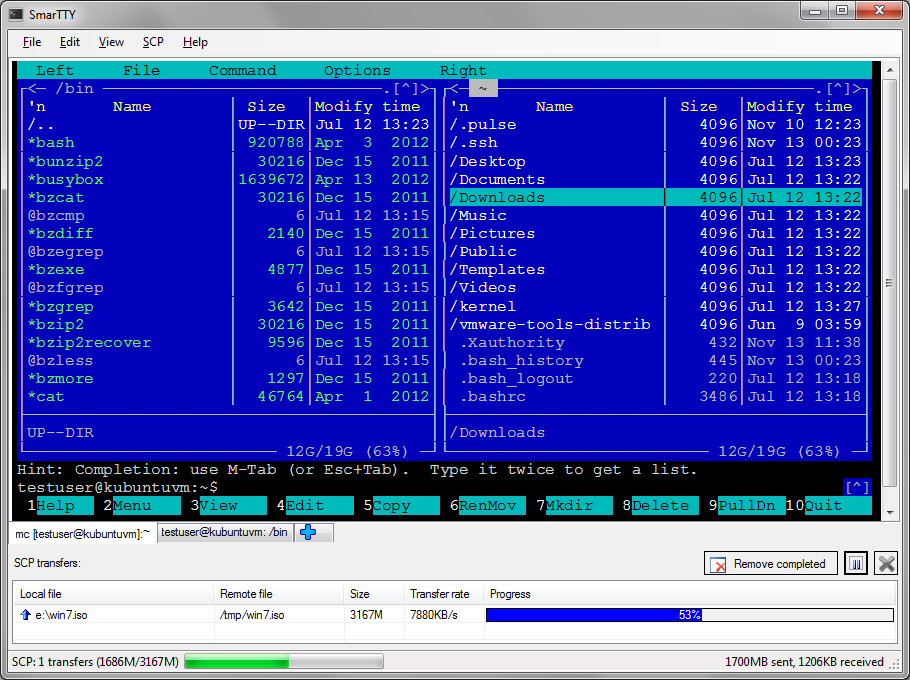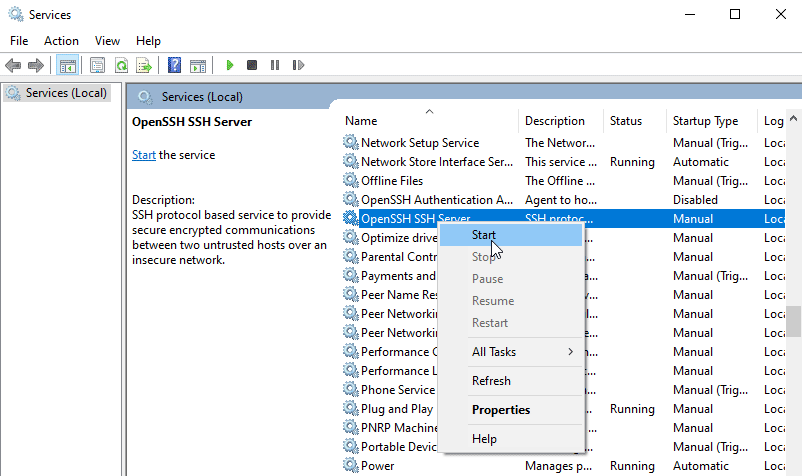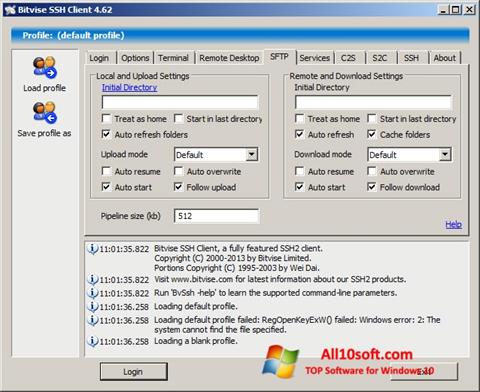

#Openssh client windows install
The simplest solution is to copy the current PATH, install the program, then add the original PATH back in using a simple between the two entries. Easy fix, though, as I've had to play with the PATH in Windows in the past, and Google can quickly tell me what it should be if I forget. I admit that I didn't read the reviews first, and found myself in the same boat. By default, the port number for SSH is 22 and if you want to use some other port number then use – P followed by the custom port no.ERMAHGERD! Installing this package overwrites the PATH variable in Windows.!Īnyone who knows enough about command line use to install OpenSSH on a Windows machine really SHOULD know enough about the PATH variable to adjust for this problem. In the above command, the test is the user and is the domain you want to connect via SSH.

You can use the command prompt or Powershell to run the SSH commands.
#Openssh client windows windows 10
Step 5: Now you can natively connect to the remote server using the Windows 10 native OpenSSH. And this time you will get the status in return for the OpenSSH client is Installed. Step 4: Again run the step 2 command to check the status of the OpenSSH. Step 3: To install the Windows 10 OpenSSH client run the following command.Īdd-WindowsCapability -Online -Name OpenSSH.Client~~~~0.0.1.0

If you are getting the status NotPresent that means the OpenSSH is not enabled on your computer so far and now move to the next step. Get-WindowsCapability -Online | ? Name -like 'OpenSSH*' Step 2: Run the following command to check the status of OpenSSH client. Step 1: Search for Powershell or just use the shortcut Windows + X and run Windows Powershell Admin. If you are familiar with commands then you can enable the OpenSSH using the Windows 10 Powershell command line. #Enable Native Windows 10 OpenSSH using Powershell Step 6: After installation, you can uninstall the Windows 10 OpenSSH client from the same place, if you want in future. Step 5: Click on Install to add the OpenSSH to Windows 10. Step 4: From Manage Optional Features, click on Add a Feature and look for OpenSSH Client. Step 3: Now search for Manage Optional Features Step 2: By default, the Developer setting is set for “ Windows Store apps” but we need to select the “ Developer Mode”
#Openssh client windows update
To check the updated before moving further go to Settings then Update & Security after that click in Windows Update to check for any new available Updates. If you have metered the Windows update, so be sure before performing this tutorial your Windows 10 is fully updated. It is one the oldest and steals strong program to establish a Secure Shell (SSH) connection over the unsecured network. The OpenSSH in Windows 10 allows you to directly connect to remote servers using command prompt or PowerShell without the need of any third party software.Īs it is still in beta stage, so be sure that you are using it for testing purpose in a secure network.b As per one GitHub report the OpenSSH in Windows 10 still has bugs so if you need something for production you can use the PuTTY. One of such features is a native support to OpenSSH client and server in the Windows 10 Fall creators update. The Windows 10 OpenSSH client and server features are still in beta stage. The Microsoft has enabled lots of good options for developers to ease their work by featuring the Developer option in the Windows 10.


 0 kommentar(er)
0 kommentar(er)
